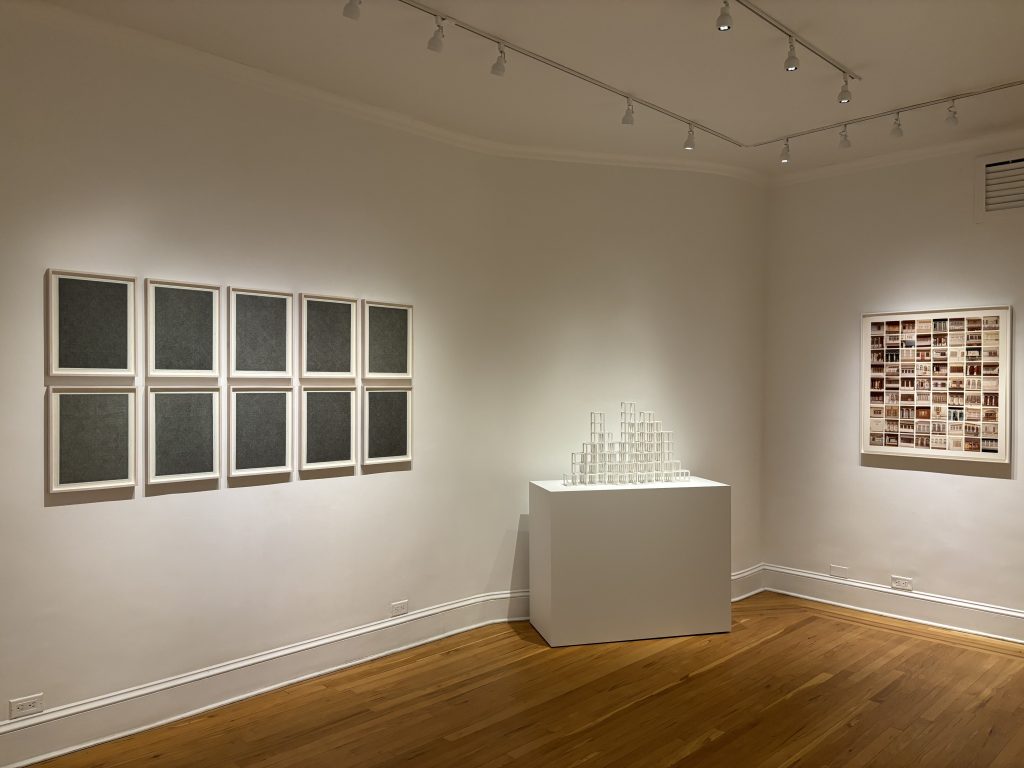
For both Phong Bui and Sol LeWitt, the line is a democratizing gesture. The line as a line: a mark; steering focus towards the method of an image’s creation rather than convincing the viewer of the realism of its ultimate subject. And, at least for both of these artists, this means we begin to deal with units. With LeWitt, the unit is the geometric shape — a square, cube, or even a diagram-a nugget of information, often placed within another diagram, offering multiple levels in the narrative of the work’s process and arrangement.
Bui’s units are more esoteric — faces are what he is known for, from his depictions of interview subjects (artists, writers, poets, and musicians) who find their way into the pages of the Brooklyn Rail. While the portraits are detailed and realistic, they are always the same general size and made with the same medium, graphite on paper. Insofar as LeWitt’s diagrams have directions, ie draw “On a wall surface, any continuous stretch of wall, using a hard pencil, place fifty points at random…” (from Wall Drawing 118, 1971). But Bui’s faces could have similar directives: make a face, make the nose this size or that, separate the eyes by this much, add a birthmark here, a curled lock of gray hair there: they catalogue the difference in artists faces whilst implying we are all made of the same base medium.
The LeWitt drawings in the exhibition run a gamut from the simple geometric: the red yellow and blue Cube (1991) to integrating a level of difference and variety that begins to verge on the uncontrollable, as in Windows (1980), where photos of windows are placed in LeWitt’s Matrix of collected units. These windows exhibit the same sort of quirky variety as Bui’s Symphony #7 (for Tony Bechara), (2025). There is a certain delight in reducing recognizable form into abstract unit, charming windows, artist’s faces—who cares?—though it can dip into the morbid and even heartbreaking in the case of Christian Boltanski and memorial and catastrophe focused artists.
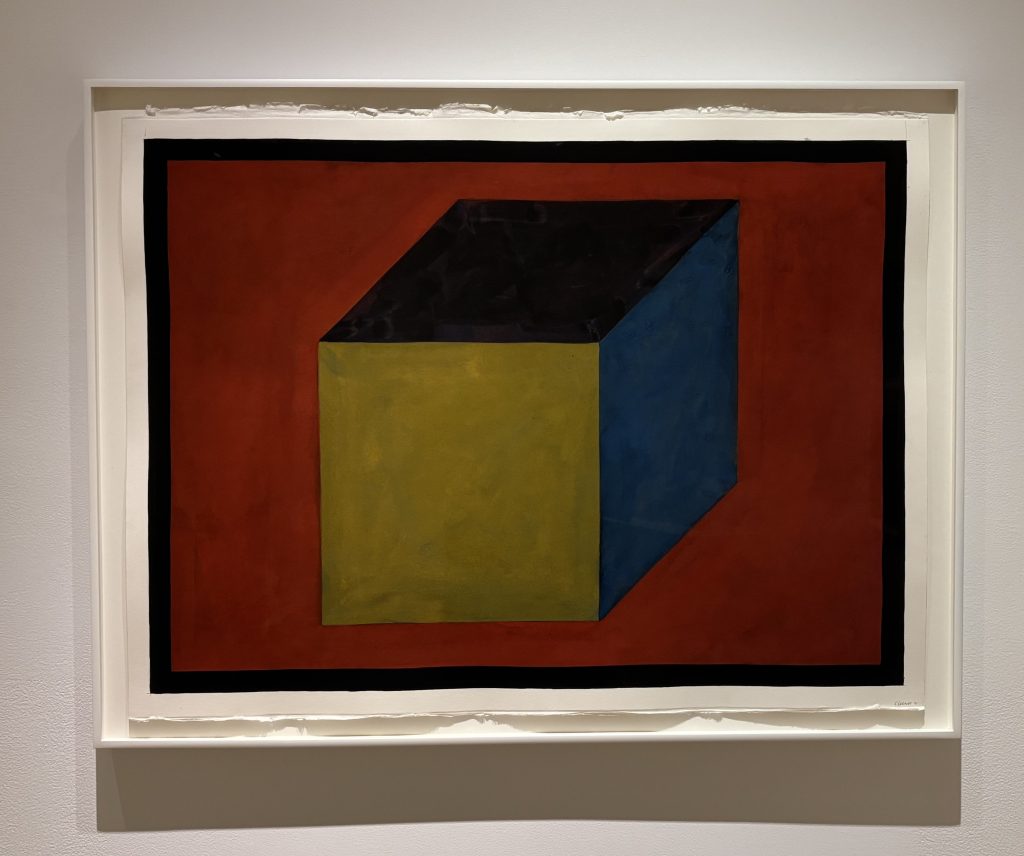
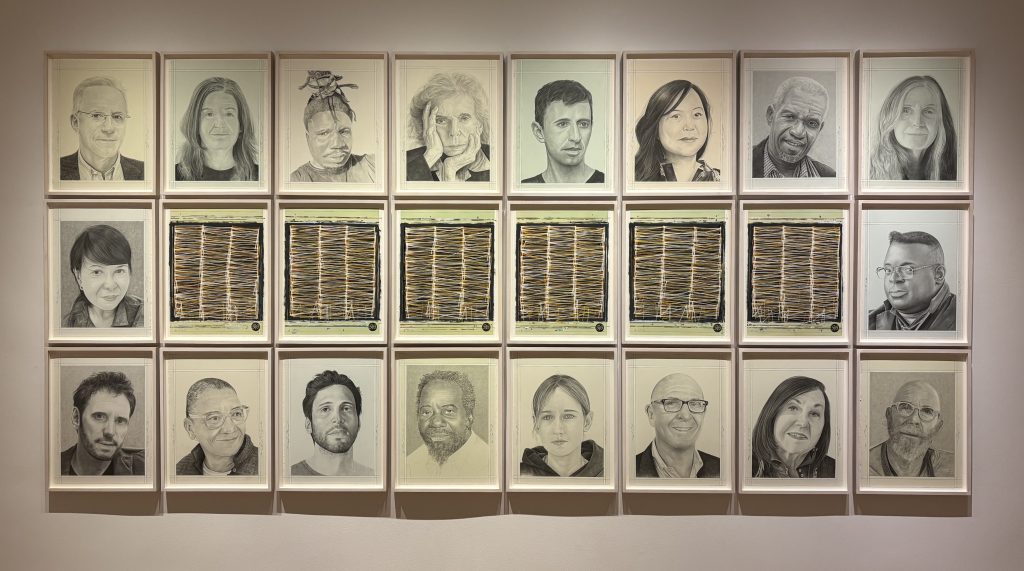
In Lewitt’s painting Horizontal Brushstrokes (2003), the artist’s mark, in this case gently undulating lines, again of blue yellow and red, are interwoven and non-discreet, pushing the painting into a zone of visual instability: we are overwhelmed by line. The same is true in the little work Three-Part Drawing Using Three Colors in Each Part (February 16, 1970), where the greater the density of cross hatching and variability of the mark, the more LeWitt creates vibrating fields which seem to less and less obey the simple rules LeWitt outlines in his directions.
Bui’s Meditation Drawings intersect with LeWitt at this point of frenetic density. Bui’s calligraphic fantasy in blue, white, and black Meditation Drawing #1 (for Dorothy Lichtenstein) (2024), is the perfect complement to Horizontal Brushstrokes with a Wilfredo Lam-Esque handling of the paint and indications of a mysterious hidden text as well. In the Meditation Drawings, Bui stays away from using line as a determinant in LeWitt’s geometric games, and instead makes drawings that have so many lines we lose all sense of shape of form, creating inscrutable fields of convoluted graphite. We did see this coming in the portraits, where meticulous tiny pencil strokes are used to designating the gentle curvature of a cheek or chin, aiming for an imperceptible mark while still seeming very graphite/graphic.
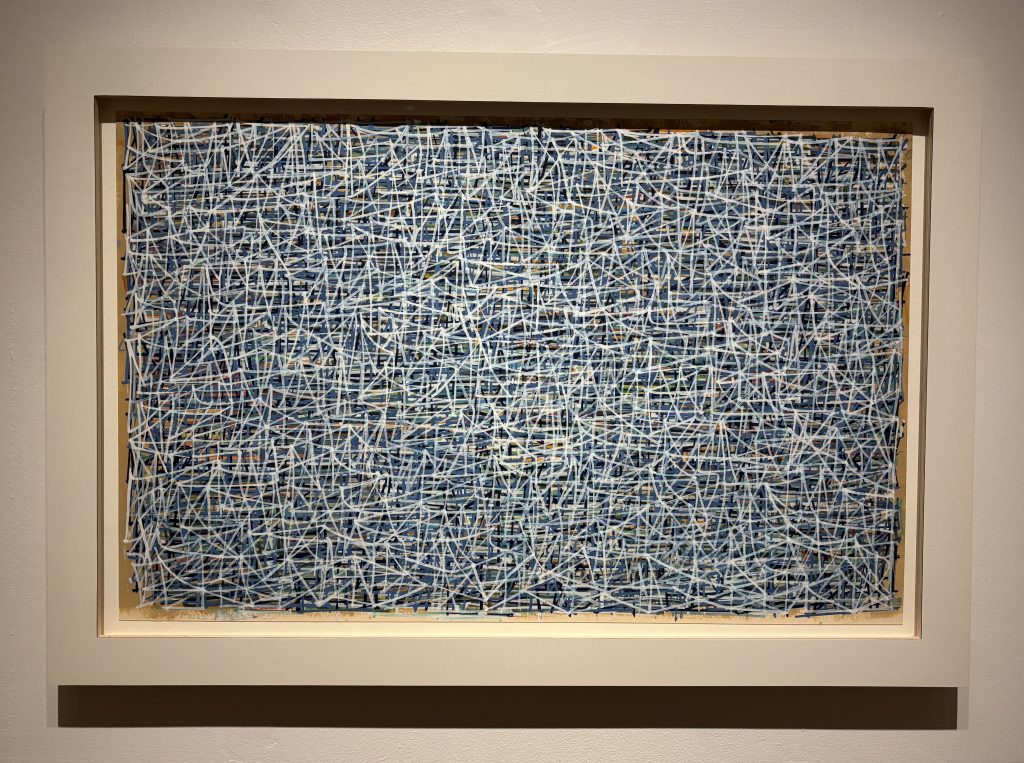
The most charming alignment between the two artists takes place in the last room of the gallery, where LeWitt’s Geometric Figures within Geometric Figures (1976) plays against Symphony #6 (For Richard Serra) (2024-25). In a 36-square grid, LeWitt has placed a variety of simple shapes, circles, squares, triangles, rectangles, trapezoids, and rhomboid parallelograms, within bigger versions of these shapes. The resulting forms have a sweet degree of personality. Catty-corner to this is Symphony #6, in which 18 portraits are ringed around six meditation drawings. LeWitt’s simple geometries look very face-like, and Bui’s faces could be variations of a theme—Bruce Nauman in a cowboy hat looks a lot like a trapezoid containing a parallelogram. The two artists are engaging in a conversation where the terms are different but the rules are the same.
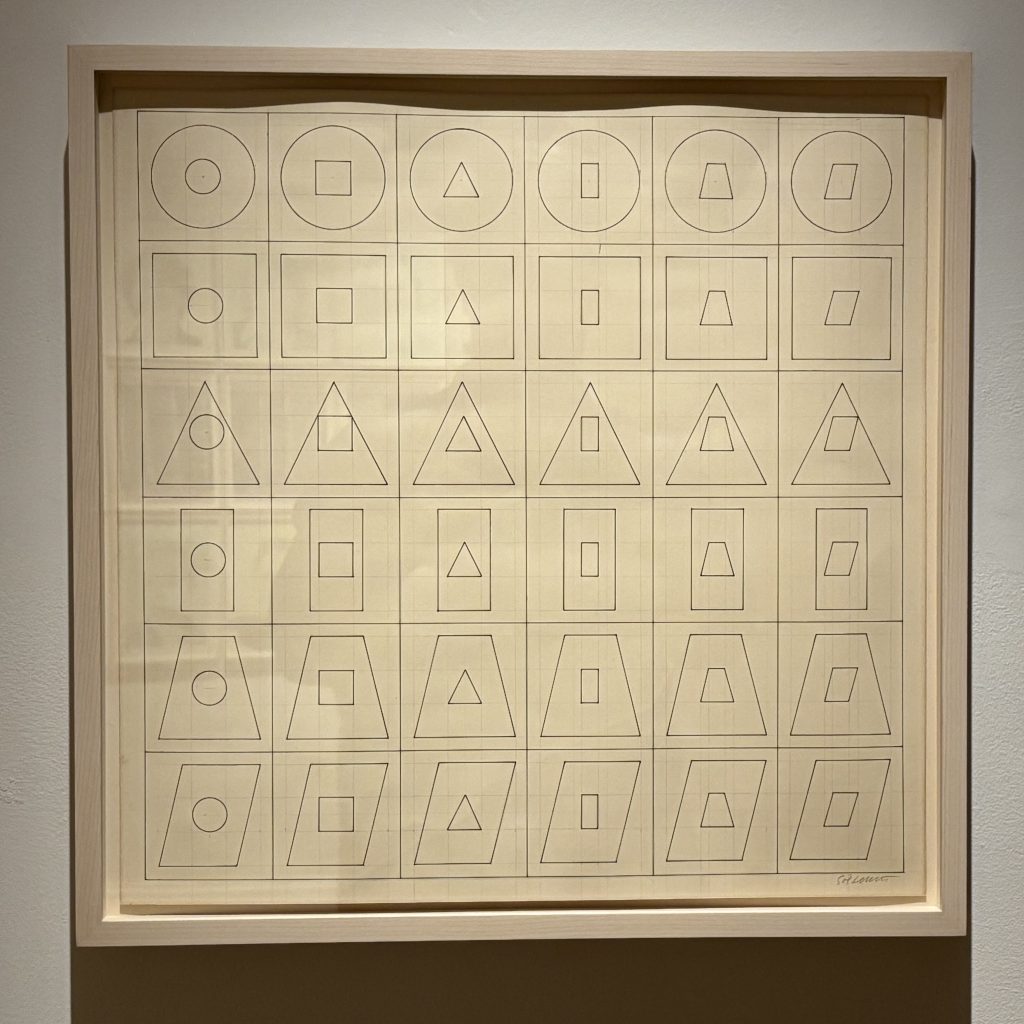
Make your tax-deductible donation today and help Art Spiel continue to thrive. DONATE
Phong H. Bui and Sol Lewitt at Craig Starr Gallery runs through October 4th, 2025
5 East 73rd Street, NYC 10021
About the writer: Will Corwin is a sculptor and writer from New York. He makes cast metal sculptures and writes regularly for the Brooklyn Rail, Art & Antiques, and ArtPapers. His most recent curatorial project was 60s Synchronicities this past summer at the Collegiale Notre-Dame de Riberac in Perigord, featuring the work of Perle Fine, Marguerite Louppe, and Jann Haworth. His most recent exhibition was a survey of the work of his last ten years of sculpture, at River House Arts in Toledo Ohio. @william_corwin